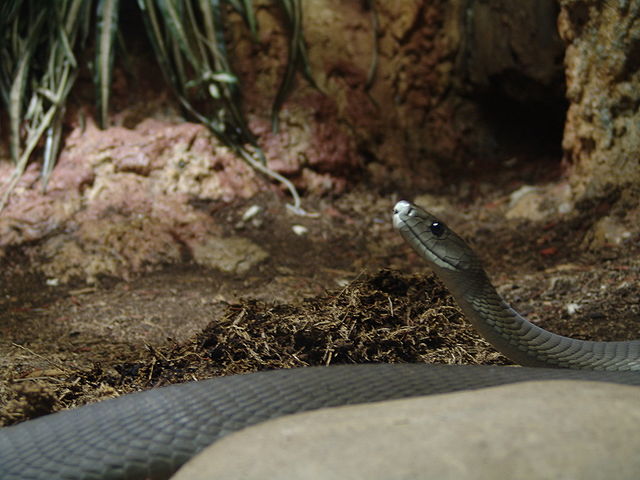Sea kraits are a genus of venomous elapid sea snakes, Laticauda. They are semiaquatic, and retain the wide ventral scales typical of terrestrial snakes for moving on land, but also have paddle-shaped tails for swimming. Unlike fully aquatic ovoviviparous sea snakes, sea kraits are oviparous and must come to land to digest prey and lay eggs. They also have independent evolutionary origins into aquatic habitats, with sea kraits diverging earlier from other Australasian elapids. Thus, sea kraits and sea snakes are an example of convergent evolution into aquatic habitats within the Hydrophiinae snakes. Sea kraits are also often confused with land kraits , which are not aquatic.
Sea krait
Elapidae is a family of snakes characterized by their permanently erect fangs at the front of the mouth. Most elapids are venomous, with the exception of the genus Emydocephalus. Many members of this family exhibit a threat display of rearing upwards while spreading out a neck flap. Elapids are endemic to tropical and subtropical regions around the world, with terrestrial forms in Asia, Australia, Africa, and the Americas and marine forms in the Pacific and Indian Oceans. Members of the family have a wide range of sizes, from the 18 cm (7.1 in) white-lipped snake to the 5.85 m king cobra. Most species have neurotoxic venom that is channeled by their hollow fangs, and some may contain other toxic components in various proportions. The family includes 55 genera with around 360 species and over 170 subspecies.
Image: King Cobra
Image: Sinomicrurus macclellandi (cropped)
Image: Black Mamba 01
Image: Fierce Snake Oxyuranus microlepidotus





